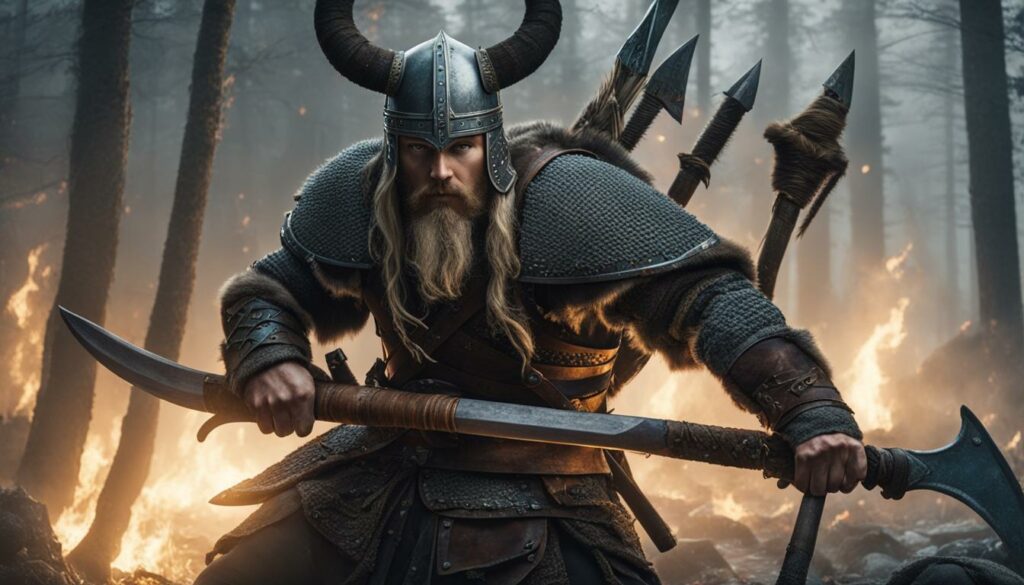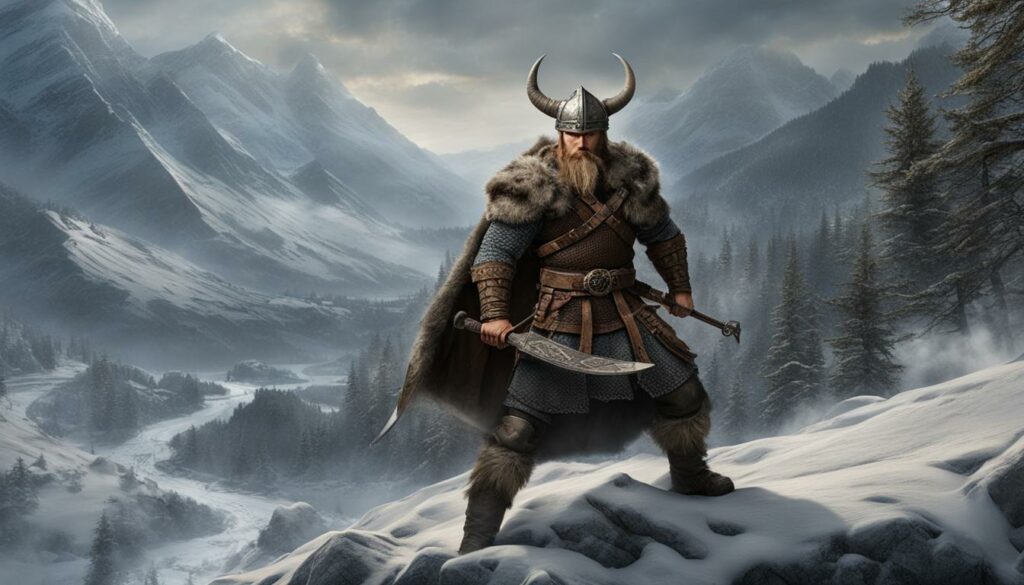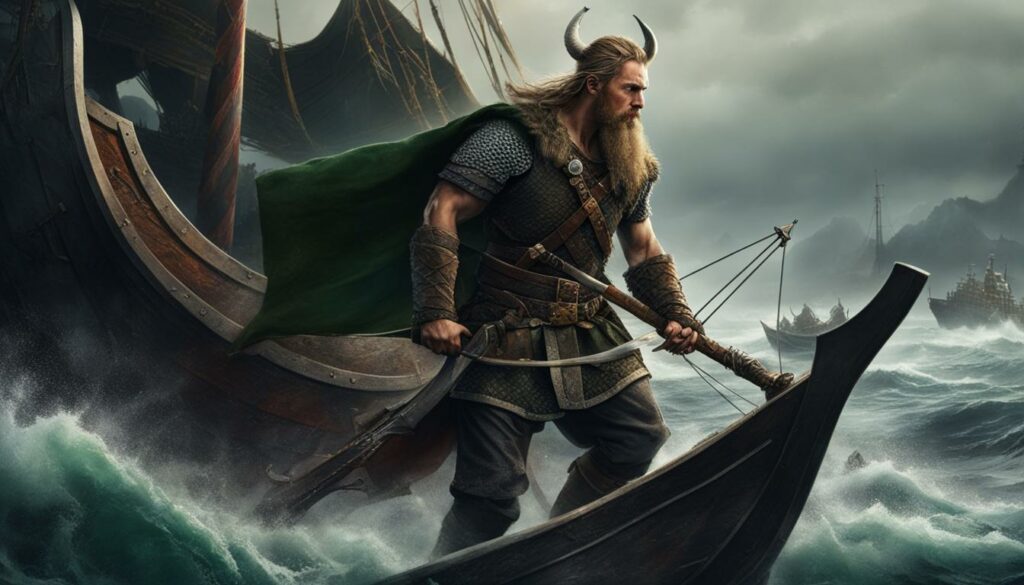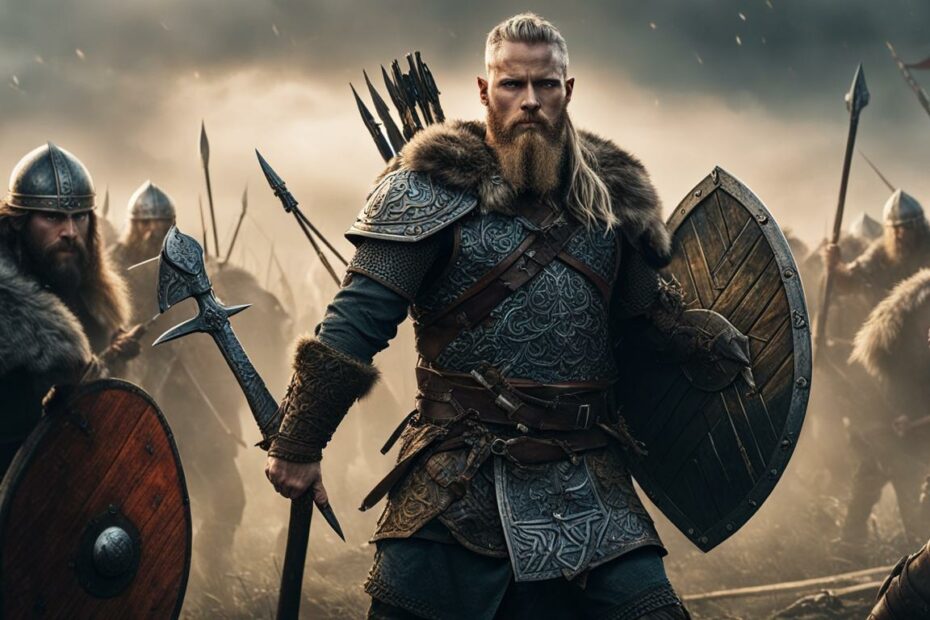One of the intriguing questions surrounding Viking warfare is whether Vikings used crossbows in their battles and raids. Historians have long debated this powerful projectile weapon.
While there is limited archaeological evidence for crossbow bolts in late Anglo-Saxon England, suggesting the possibility of crossbow use, the true extent of their usage remains uncertain.
The Crossbow in Viking Society
The crossbow played a significant role in Viking society, evolving from a hunting tool to a formidable weapon of war.
While archaeological evidence for crossbows in Viking graves is limited, other types of projectile weapons, such as large, classically-shaped longbows made of yew, have been discovered in Viking-era burials.
This suggests that the use of crossbows by Vikings may have varied depending on regional customs, traditions, and the availability of resources and materials.

Although the exact extent of Viking crossbow use remains uncertain, it is clear that these ancient Norse warriors recognized the value of advanced weaponry on the battlefield.
With its robust and accurate capabilities, the crossbow would have given Vikings a distinct advantage in combat.
Unfortunately, a comprehensive understanding of the crossbow’s prominence in Viking society is challenging due to the limited archaeological evidence and the perishable nature of certain materials.
However, historical accounts and depictions in art provide valuable insights into the potential role and significance of crossbows in Norse culture.
| Advantages of Crossbows | Advantages of Longbows |
|---|---|
| – Power and accuracy | – Rapid rate of fire |
| – Easy to use | – Longer range |
| – Effective for hunting and warfare | – Lightweight and versatile |
Crossbow vs Longbow
The Viking warriors were known for their strategic warfare tactics, utilizing a variety of weapons to gain an advantage on the battlefield. One of the ongoing debates in Viking warfare is the comparison between the use of crossbows and longbows.
While longbows are often associated with the English and their famous victories, such as the Battle of Agincourt, historical evidence suggests a less specific prevalence among Vikings.
Conversely, crossbows offer distinct advantages, making them a viable choice for Viking warriors. Crossbows are known for their ease of use, accuracy, and power, making them suitable for skilled archers and those with less training.
The crossbow mechanism allows for a higher draw weight, which results in increased velocity and striking power. This made crossbows especially effective in penetrating armor and fortifications.
In contrast, longbows are valued for their rapid rate of fire. Skilled longbow archers could quickly release multiple arrows, delivering a hail of projectiles to their enemies.
The longbow’s versatility allowed for long-range accuracy and close-quarters combat, making it a formidable weapon for well-trained archers. However, the historical evidence regarding the widespread use of longbows by Vikings remains uncertain (source).

The Advantages of Crossbows in Viking Warfare Tactics:
- Ease of use
- Accuracy
- Powerful striking ability
- Effective against armor and fortifications
The Advantages of Longbows in Viking Warfare Tactics:
- Rapid rate of fire
- Versatility for long-range and close-quarters combat
Historical Context
The use of crossbows in history extends beyond the Viking era. Crossbows were introduced to England following the Norman Conquest, as evidenced by archaeological finds such as crossbow bolt-heads and crossbow mechanisms from the Romano-British period.
These discoveries highlight the presence of crossbows in pre-Conquest England, indicating their early use in warfare and hunting.
The ban on crossbows by Pope Innocent II in the 12th century had little impact on their use in warfare, as they became the predominant missile weapon in later medieval Europe.
Crossbows offered several advantages over traditional longbows, including ease of use and greater accuracy. Soldiers favored them because they could penetrate armor and deliver fatal blows from long distances.
The evolution and proliferation of crossbows throughout history played a significant role in shaping military tactics and strategies. From their origins in pre-Conquest England to their widespread adoption in later medieval Europe, crossbows left an indelible mark on the history of warfare.

| Period | Significance |
|---|---|
| Pre-Conquest England | Introduction of crossbows following the Norman Conquest |
| Later Medieval Europe | Wide adoption and proliferation of crossbows as the predominant missile weapon |
Images of Crossbows
Various depictions of crossbows can be found throughout medieval art and manuscripts, providing visual evidence of their existence and use during this time period. These images showcase the design and mechanisms of crossbows and provide insights into their portrayal in different contexts, such as hunting and warfare.
One such depiction is found in the illuminated manuscript, the Maciejowski Bible, created in the 13th century. This renowned manuscript features intricate illustrations of biblical scenes, including depictions of soldiers using crossbows in battle. The detailed drawings show how crossbows were employed as a potent projectile weapon during this era.

Another example can be found in the ceiling fresco of the Sistine Chapel, painted by Michelangelo in the 16th century.
While depicting the creation of Adam, this iconic artwork includes the depiction of an angel holding a crossbow. This portrayal highlights the crossbow’s presence in religious symbolism and further emphasizes its significance within the cultural zeitgeist of the time.
These artistic representations of crossbows offer a visual record of their existence and provide insight into their cultural and historical significance.
They serve as valuable resources for researchers and enthusiasts alike, aiding in understanding the development, design, and utilization of crossbows throughout history.
Crossbow Regulations
Like any other weapon, crossbows are subject to regulations to ensure public safety and responsible ownership. One relevant piece of legislation in the United States is the Crossbows Act of 1987. This act imposes restrictions on the possession and purchase of crossbows, particularly when it comes to minors.
Under the Crossbows Act, individuals below a certain age are prohibited from owning or purchasing a crossbow. The specific age limit may vary from state to state, so it is crucial to familiarize oneself with the regulations in the respective jurisdiction.
Adhering to the guidelines outlined by the Crossbows Act can help individuals avoid legal complications and ensure safe and responsible crossbow ownership.
It is important to note that crossbow regulations are in place to protect both individuals and the community. Properly handling and storing crossbows are essential to prevent accidents and misuse.
Additionally, knowing the regulations and abiding by them helps maintain the integrity of the sport for crossbow enthusiasts and preserves the recreational use of crossbows.
Summary
The Crossbows Act of 1987 regulates crossbows, restricting minors’ possession and purchase. Individuals must familiarize themselves with the specific regulations in their jurisdiction to ensure compliance and responsible ownership.
By following the guidelines outlined in the Crossbows Act, individuals can enjoy the sport of crossbow shooting while prioritizing safety and the well-being of themselves and others.
FAQ
Did the Vikings use crossbows?
Historians debate the use of crossbows by Vikings. While limited archaeological evidence suggests the possibility of crossbow use in late Anglo-Saxon England, the true extent of their usage remains unclear.
What evidence is there of crossbows in Viking society?
The archaeological evidence for the presence of crossbows in Viking graves is limited. However, there are examples of large, classically shaped longbows made of yew found in Viking-era burials.
Did Vikings prefer crossbows or longbows in warfare?
The prevalence of crossbows among Vikings is uncertain, as they were more popular in Frankish and Norman hands due to their ease of use. The debate between crossbows and longbows in Viking warfare tactics is still ongoing.
How were crossbows used in history beyond the Viking era?
Crossbows were introduced to England following the Norman Conquest, and their use in warfare became predominant. Pope Innocent II’s ban on crossbows in the 12th century had little impact on their usage.
Are there visual depictions of crossbows in medieval art?
Various depictions of crossbows can be found in medieval art and manuscripts, providing visual evidence of their existence and use during this period.
Are there any regulations regarding crossbows?
Yes, there are regulations regarding crossbows, such as the Crossbows Act of 1987, which restricts minors’ possession and purchase of crossbows. Individuals need to be aware of these regulations and responsibly own crossbows.
